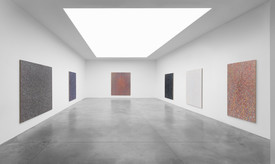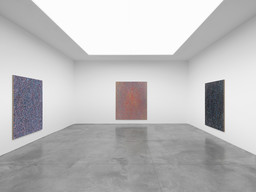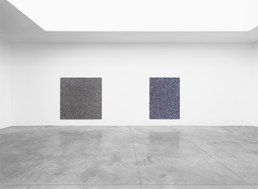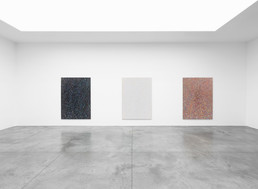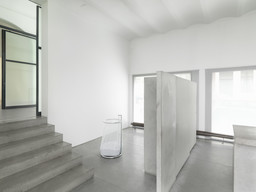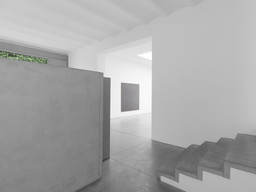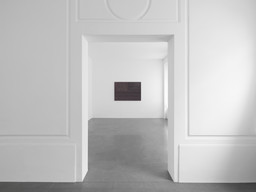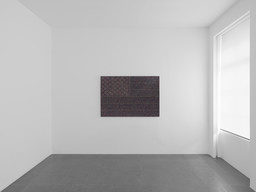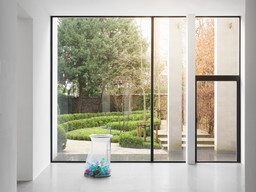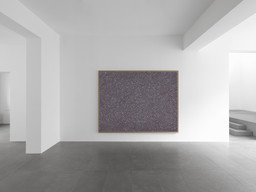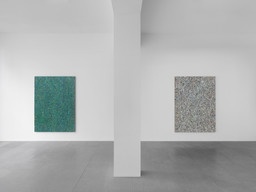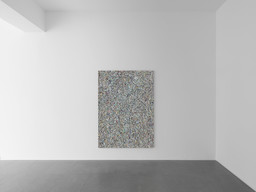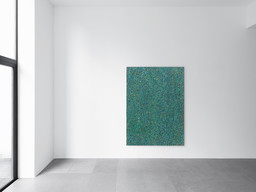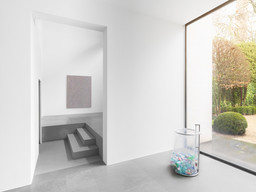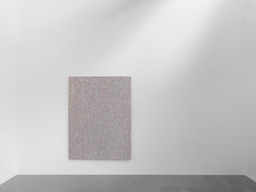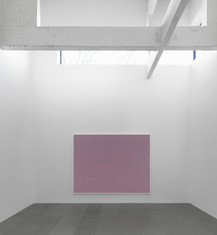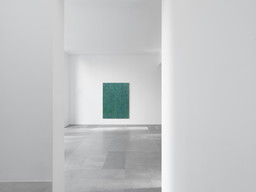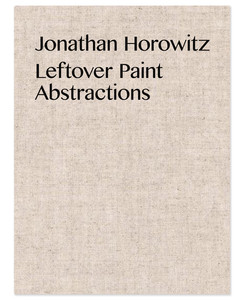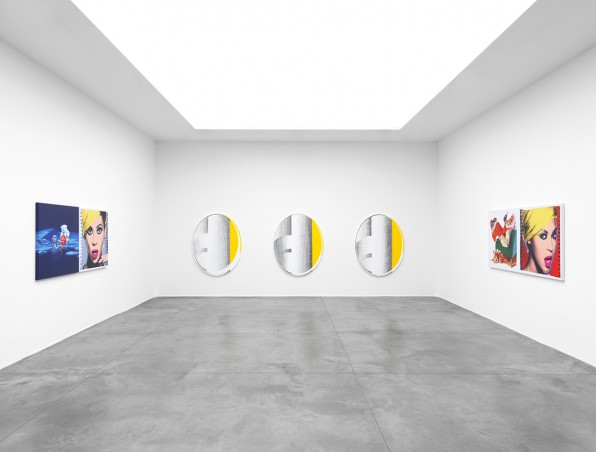Jonathan Horowitz: Leftover Paint Abstractions
8 March—14 April 2018
6 rue St-Georges | St-Jorisstraat
| 1 | / | 17 |
×
For his second solo exhibition at Xavier Hufkens, New York-based artist Jonathan Horowitz presents a new series of paintings entitled Leftover Paint Abstractions. In making the work, Horowitz diverts the flow of his own and fellow artists’ leftover paint from drains and landfills to panels stretched with coarse, raw linen. The resulting paintings are suggestive of both cosmic, infinite space and a dystopian, contaminated earth. Additional works in the exhibition reference earlier, signature painting projects of Horowitz’s, employing a different kind of ‘recycling.’ In concert with the Leftover Paint Abstractions, these works explore themes of personal identity and its dissolution in a time of cultural and political crisis.
The Leftover Paint Abstractions are made from hundreds of layers of paint, built up over time in splattered dots and drips. From a distance, optical melding creates a field of color. On closer view, a dense weave of hundreds of thousands of dots becomes visible, revealing a methodology that owes as much to Pointillism as Abstract Expressionism. In addition to its optical quality, the accumulated paint forms a highly textured surface, like an otherworldly, mountainous terrain. This ‘natural’ world contrasts with the naturalness of the coarse, raw linen underneath the paint, still visible on the sides of the stretchers.
Compositionally, there is an interplay between chance and deliberation. Some of the paintings have an all-over, homogenous pattern, while others have a central, apparition-like focus. In the color schemes of the paintings, there is an analogous interplay between the found sourcing of the paint and Horowitz’s selection of colors to combine. Unlike most series of abstract paintings, each work has its own, distinct palette. This stems from the always-changing nature of the paint supply. Out of this circumstance, unexpected choices have been made, and color experimentation is central to the work.
The theme of recycling is highlighted by the functional, readymade piece Recycling Sculpture (Eileen Gray Table). In this work, the modernist creed of functionalism is expanded to address the urgency of environmentalism. Made from a reproduction Eileen Gray E1027 table and a clear plastic bag, the work brings the recycling bin from the closet to the center of the room, directing the user/viewer to always think about their consumption.
Another work in the show, Coke/Pepsi (155,172 Cans) is from an earlier series of Horowitz’s of images of Coke and Pepsi cans printed on vinyl. Coke and Pepsi represent the binary decision-making that underpins both capitalism and the American political system (red and blue are the colors which symbolize the two US political parities). Here, the cans have been miniaturized, creating a vast, random field of undulating purple. A computer algorithm has determined the order of the cans, and as such, the painting acts as a machine generated correlate to the Leftover Paint Abstractions.
This painting, is re-interpreted in a second, new series of works titled Leftover Glitter Abstractions. In Leftover Glitter Abstraction (Rainbow American Flag for Jasper in the Style of the Artist’s Boyfriend), Horowitz remakes his first rainbow glitter flag painting from 2003, which is itself based on Jasper Johns’ first flag painting. In the new version, Horowitz mixes together all of the colors of glitter from the 2003 version. What results is a purplish, iridescent mud, all but erasing a symbol of national and sexual identity. The painting can be seen as a reflection on the current state of American politics and culture. The same mix of glitter is used to re-interpret the aforementioned Coke/Pepsi painting. In this painting, recalling the dots of the Leftover Paint Abstractions, the tiny particles of glitter create an enormous field of shimmering darkness, beckoning the viewer into its depths. The work is an apt coda for the exhibition as a whole, with its conflicting strains of beauty, ugliness, hope and despair.
Jonathan Horowitz (b. 1966, New York) lives and works in New York. Recent exhibitions include: 1612 DOTS, Oculus World Trade Center, New York (2017); Occupy Greenwich, The Brant Foundation, Greenwich (2016). His exhibition Your Land/My Land: Election ’12 was staged concurrently at seven museums across the US (from the Hammer Museum, Los Angeles to the New Museum, New York, 2012).
On the occasion of the exhibition Leftover Paint Abstractions, Xavier Hufkens has published a catalogue featuring an essay by the New York-based writer, curator and educator Joshua Decter, and an interview with the artist by the curator and director of the Swiss Institute New York, Simon Castets.
